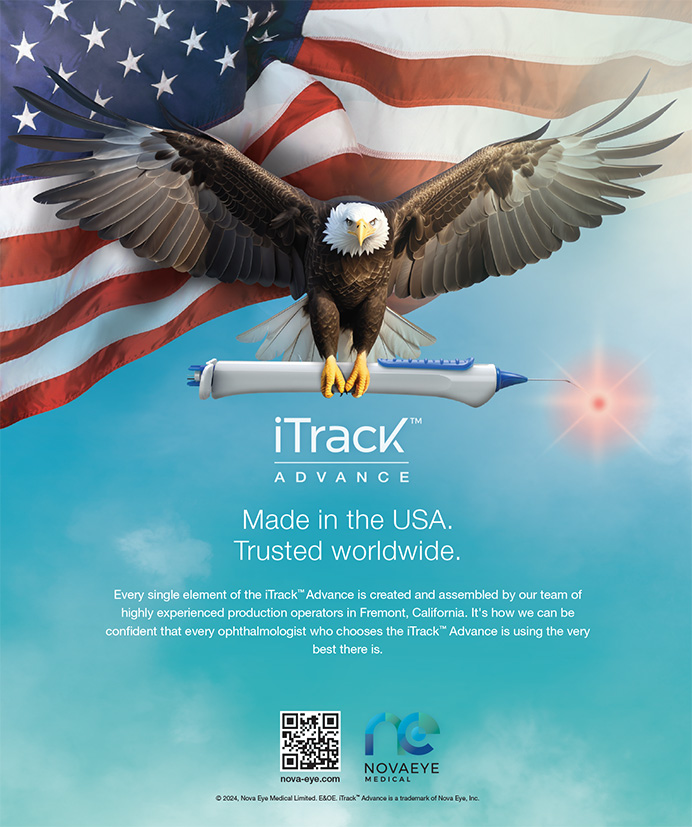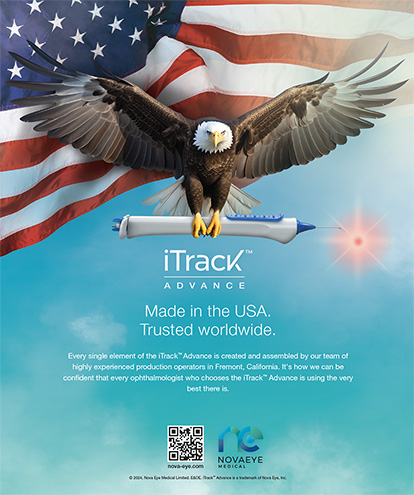
The Medicare MIGS space has been in flux during the past 12 months. The majority of Medicare Administrative Contractors (MACs) have deliberated final Local Coverage Decisions (LCDs) for MIGS procedures, producing outcomes ranging from noncoverage of certain MIGS procedures to partial coverage and limitations for others. The new MIGS LCDs took effect in November 2024.1 Although many consider these LCDs a significant improvement over the 2023 version, questions remain regarding the scope of covered procedures under the policies issued by five of the seven MACs.
POSITIVE COVERAGE STATEMENTS IN THE LCDS
MIGS With Cataract Surgery
Under the updated LCDs, one trabecular aqueous stent device per eye is approved for adults with mild or moderate open-angle glaucoma who require an ocular hypotensive medication. This coverage applies when the procedure is performed in conjunction with cataract surgery. Additionally, phacoemulsification and IOL placement may be conducted alongside a single MIGS procedure.1
MIGS Without Cataract Surgery
The LCDs also grant coverage for a single subconjunctival space stent or trabecular aqueous stent device as a standalone procedure per eye in cases of refractory glaucoma. Refractory glaucoma is defined as either prior failure of a filtering or cilioablative procedure or uncontrolled IOP, as evidenced by progressive damage or a mean diurnal medicated IOP of 20 mm Hg or higher on maximally tolerated medical therapy. Typically, maximally tolerated medical therapy involves four or more classes of topical IOP-lowering medications, unless fewer are used for reasons related to tolerability or efficacy.
DEFINING MIGS: SCOPE AND AMBIGUITIES
The requirement for a single MIGS procedure in the combined cataract-MIGS scenario raises questions about which procedures are included. The LCDs describe MIGS as “a group of surgical procedures that are performed using an ab interno approach and designed to reduce trauma to ocular tissues.”2 Several specific MIGS procedures mentioned in the LCDs include stent placement, goniotomy, and canaloplasty. However, given the evolving and dynamic nature of glaucoma surgical technologies, this definition lends itself to flexible interpretation. Conventional glaucoma procedures such as trabeculectomy, tube shunts, and cyclodialysis are not classified as MIGS in the LCDs or in the AAO’s Primary Open-Angle Glaucoma Preferred Practice Pattern.
Coverage Limitations (Noncoverage)
The LCDs indicate that MIGS procedures are not first-line treatments. Thus, the traditional paradigm of antiglaucoma medications and/or laser therapy as first-line interventions remains in place. Additionally, the following combinations are not covered:
- Performance of a MIGS procedure and placement of an aqueous shunt at the same time of service in the same eye and
- Performance of phacoemulsification, IOL placement, and more than one MIGS procedure (eg, cataract surgery plus stent placement plus canaloplasty or goniotomy) at the same time of service in the same eye.
OTHER MIGS NOT ADDRESSED IN THE LCDS
Coverage for MIGS procedures not specifically mentioned in the LCDs may vary. The policy states that phacoemulsification with IOL placement may be performed “with a single MIGS procedure.” The type of MIGS device is not specified. This broad language creates ambiguity regarding the scope of coverage.
Because goniotomy and canaloplasty are referenced in both the LCDs and the AAO’s Primary Open-Angle Glaucoma Preferred Practice Pattern, these procedures appear to be covered when performed alongside cataract surgery. However, for MIGS procedures not explicitly discussed in the LCDs, it is unclear whether coverage is granted under the LCD or handled on a claim-by-claim basis.
OTHER GLAUCOMA PROCEDURES
Non-MIGS procedures such as trabeculectomy, aqueous shunts, and bio-interventional cyclodialysis remain outside the scope of these LCDs and are not affected.
CLARIFYING COVERAGE FOR EVOLVING GLAUCOMA TREATMENTS
Further guidance from MACs is necessary to ensure clarity and consistency for surgeons seeking coverage for evolving glaucoma interventions.
1. Centers for Medicare & Medicaid Services. Local Coverage Determination (LCD): micro-invasive glaucoma surgery (MIGS) (L37578). CMS.gov. March 19, 2018. Updated November 17, 2024. Accessed January 14, 2025. https://www.cms.gov/medicare-coverage-database/view/lcd.aspx?lcdid=37578
2. Gedde SJ, Vinod K, Wright MM, et al. Primary Open-Angle Glaucoma Preferred Practice Pattern. Ophthalmology. 2021;128(1):P71-P150.




